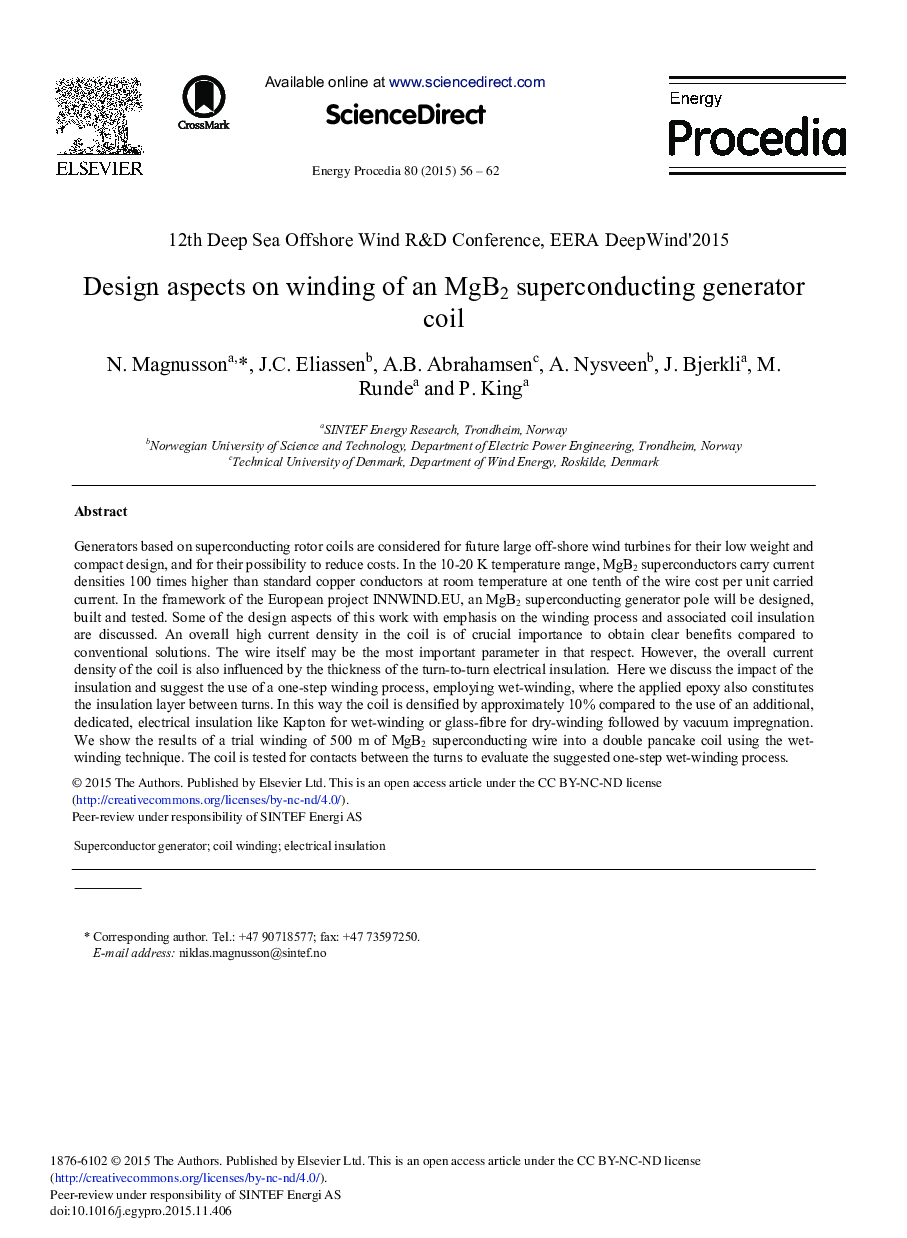| Article ID | Journal | Published Year | Pages | File Type |
|---|---|---|---|---|
| 1509593 | Energy Procedia | 2015 | 7 Pages |
Generators based on superconducting rotor coils are considered for future large off-shore wind turbines for their low weight and compact design, and for their possibility to reduce costs. In the 10-20 K temperature range, MgB2 superconductors carry current densities 100 times higher than standard copper conductors at room temperature at one tenth of the wire cost per unit carried current. In the framework of the European project INNWIND.EU, an MgB2 superconducting generator pole will be designed, built and tested. Some of the design aspects of this work with emphasis on the winding process and associated coil insulation are discussed. An overall high current density in the coil is of crucial importance to obtain clear benefits compared to conventional solutions. The wire itself may be the most important parameter in that respect. However, the overall current density of the coil is also influenced by the thickness of the turn-to-turn electrical insulation. Here we discuss the impact of the insulation and suggest the use of a one-step winding process, employing wet-winding, where the applied epoxy also constitutes the insulation layer between turns. In this way the coil is densified by approximately 10% compared to the use of an additional, dedicated, electrical insulation like Kapton for wet-winding or glass-fibre for dry-winding followed by vacuum impregnation. We show the results of a trial winding of 500 m of MgB2 superconducting wire into a double pancake coil using the wet-winding technique. The coil is tested for contacts between the turns to evaluate the suggested one-step wet-winding process.
